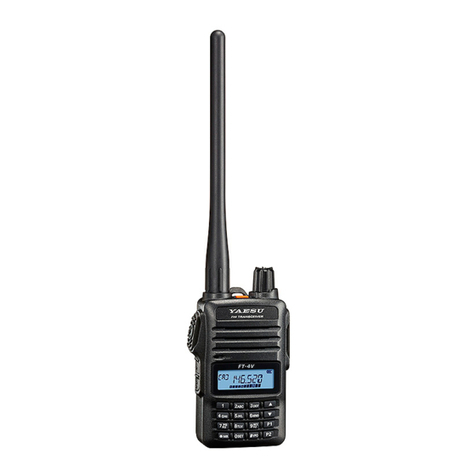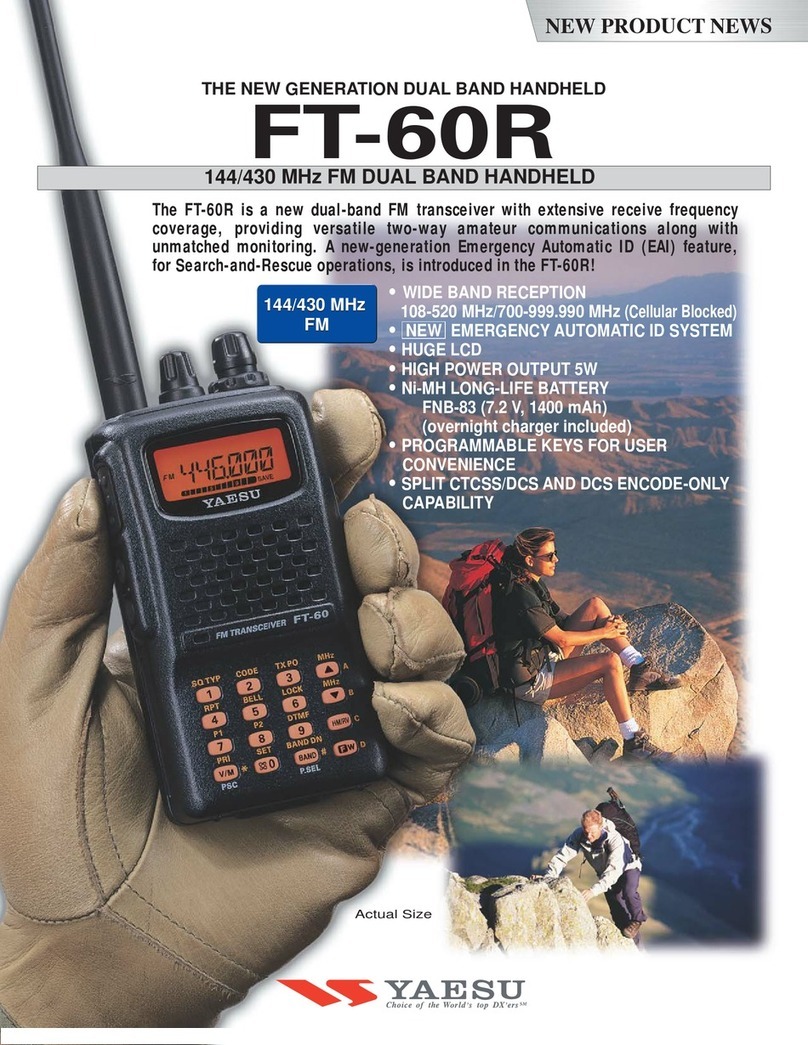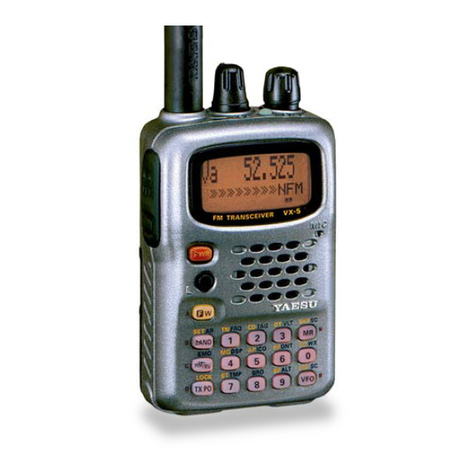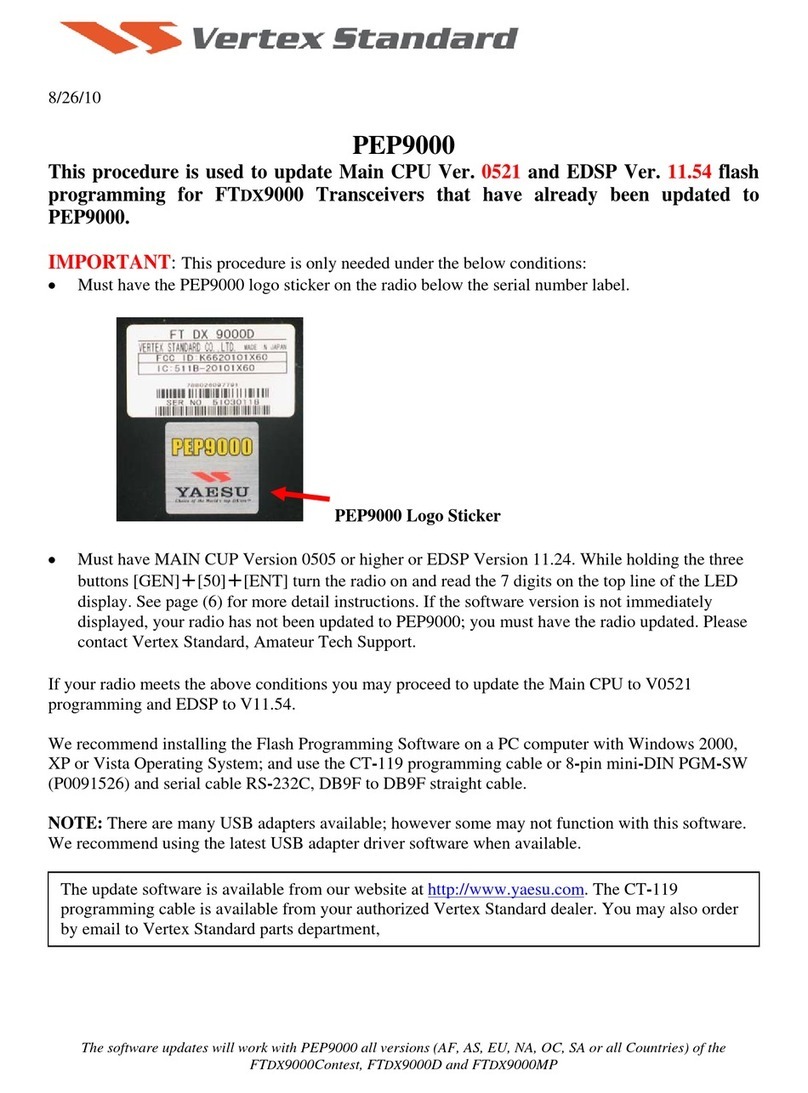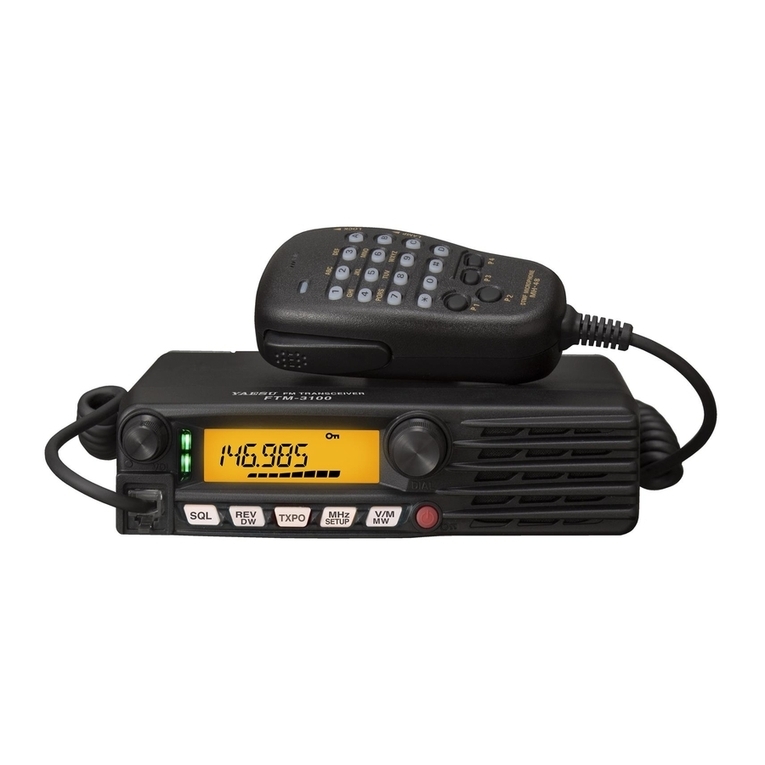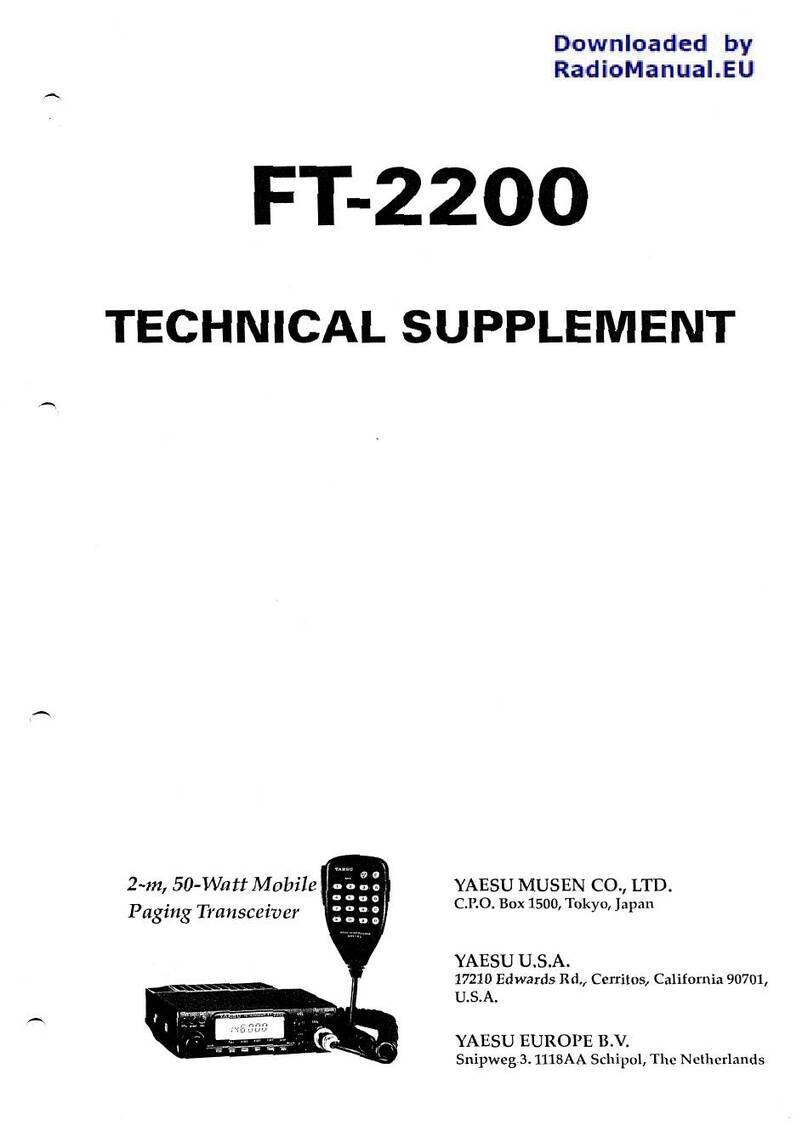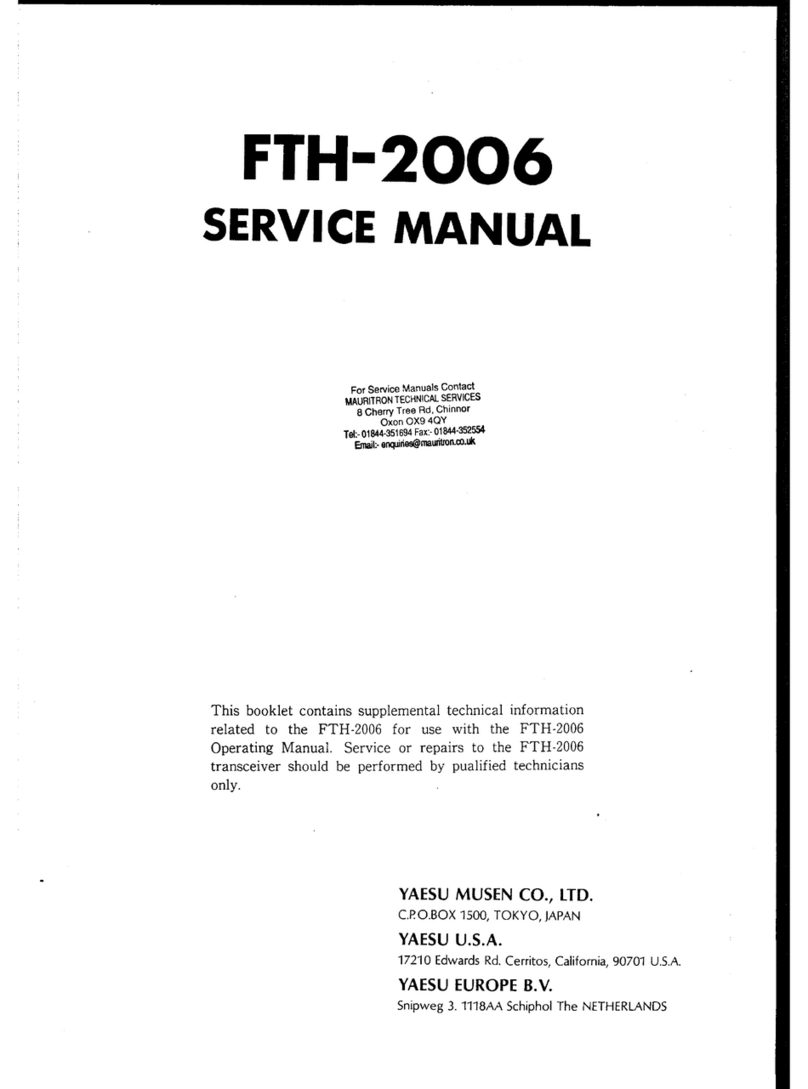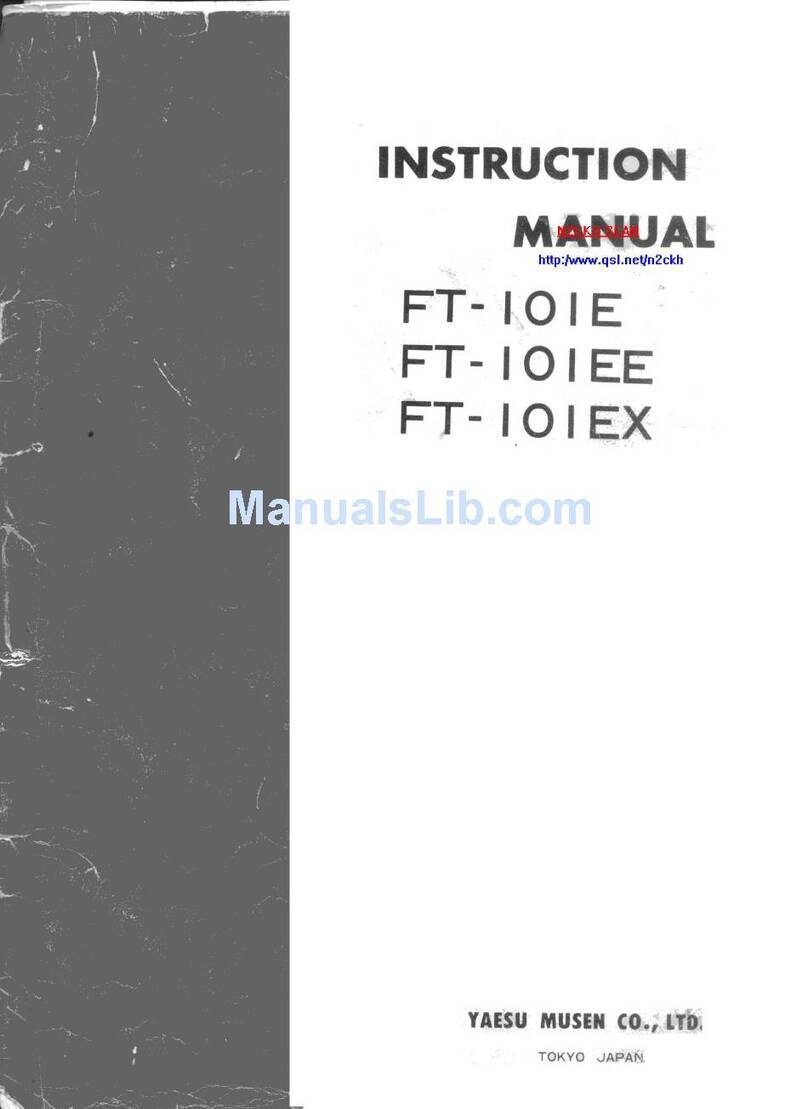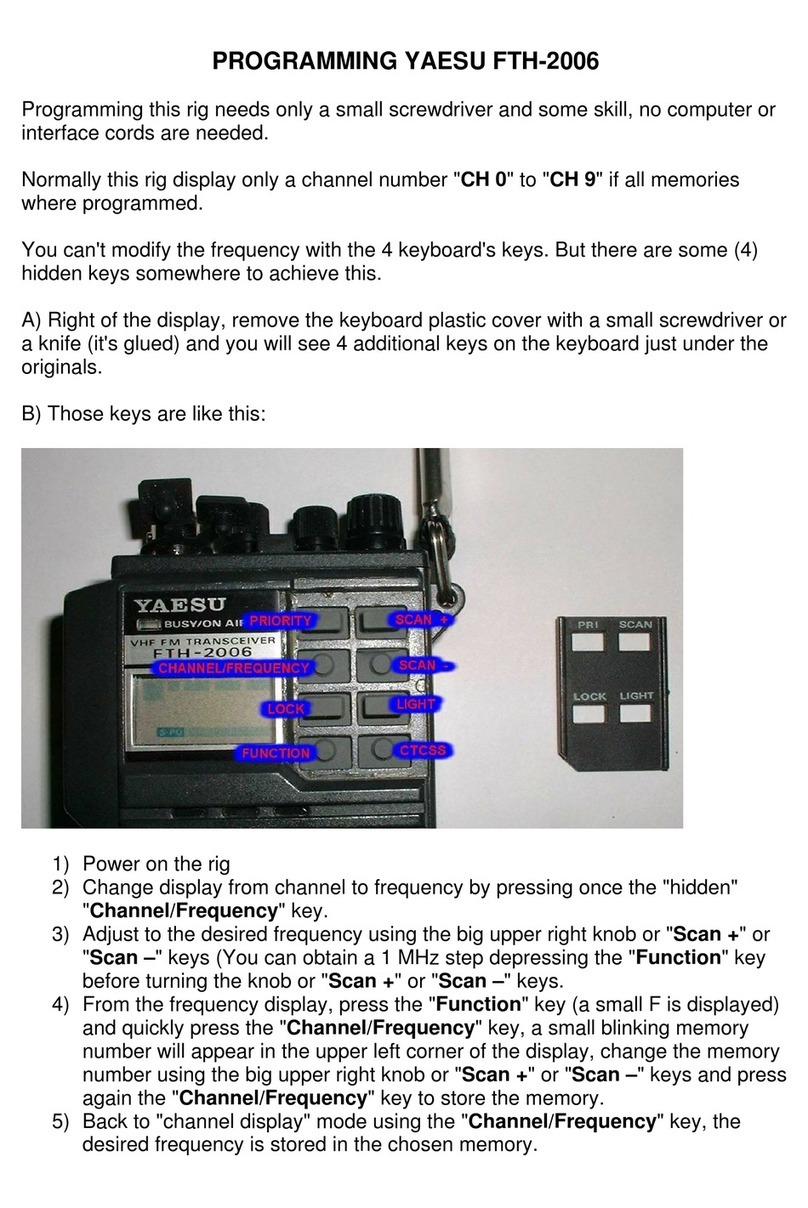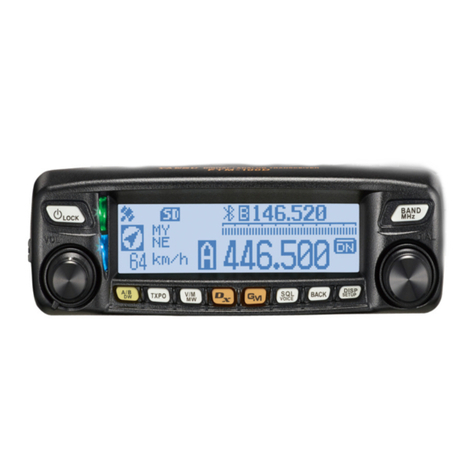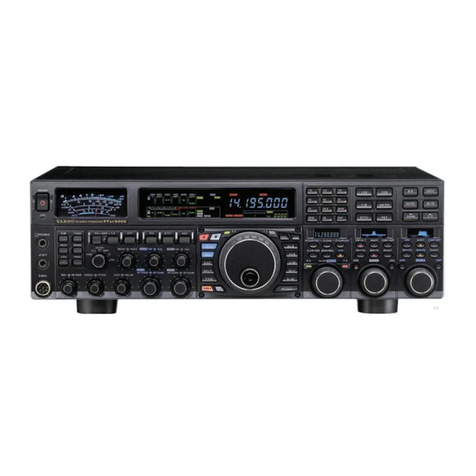CONTENTS
SPECIFICATIONS
• • • • • • • • • • • • • • • • • • • • • • • • • • • . . . .
...
2
LIST
Of
ACCESSO
RIES
&
OPTIONS
.•.•.....•••..••..••.
3
CONT
RO
LS
&
CONNECTO
RS
..•.....••......•........
A
TOP
PANEL
4
FRONT
&
SIDE
PANELS
6
ACCESSORIES
& OPTIONS
..........................
B
Battery
Packs and Cases
Battery
Removal and
Replacement
Battery
Chargers
Speaker
/Micropho
nes
Antenna
Considerations
8
9
10
12
12
OPERATION
.....................................
13
Preliminary
Operating
In
formation
Sq
uelch
Setup
I
mportant
Keypad
Information
Band
Selection
VFO
Frequency
& Step
Selection
Dual
Band
Reception
l 'ransmi
tti
ng
Repeater
Offsets
Changing
the
Standard
Repeater
Offset
Me
mory
Storage
Memory
Re
cal
1&
Copy
Hiding
and
Erasing
Memories
Ca
ll
C
hannel
Memory
Alternating
Band
Memory
Selection
Scanning
Memory
Sk
ip
Scanning
Programmable
Memory
Scanning
(PMS)
Priority
Channel
Monitoring
Tone
Squelch/Pager
Operation
Power
Saver
APO
(Automatic
Power-Off)
DTMF
Memories
System
Reset
13
13
14
15
15
17
17
18
19
19
20
21
22
22
23
23
24
24
25
26
28
28
30
In
Case
of
Problems
. . . . . . . . . . . . . . . . . • . . . . . . . . . . . . . .
31
Getting
the
Most from Your
Batteries
. . . . . . . . . . . . . . . . . .
..
32


